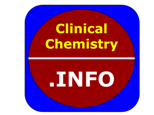Clin Chem Lab Med. 2025 Mar 6. doi: 10.1515/cclm-2024-1139. Online ahead of print.
ABSTRACT
OBJECTIVES: Isotope dilution-liquid chromatography-tandem mass spectrometry (ID-LC MS/MS)-based candidate reference measurement procedures (RMPs) for the quantification of 24,25(OH)2D2 and 24,25(OH)2D3 in human serum and plasma are presented.
METHODS: Quantitative nuclear magnetic resonance (qNMR) spectroscopic methodology was utilized to assign absolute content (g/g) and SI-traceability to reference materials used as primary calibrators. For liquid chromatography-tandem mass spectrometry (LC-MS/MS) analysis a two-dimensional heart cut LC approach, in combination with a supported liquid extraction protocol, was established to mitigate matrix effects and prevent co-elution of interferences. Selectivity was determined by spiking the internal standards and similar compounds, in human serum. A post-column infusion experiment and comparison of standard line slopes was performed to evaluate matrix effects. Precision and accuracy were assessed via a multi-day validation experiment, utilizing certified secondary reference materials from the National Institute of Standards and Technology (NIST). Measurement uncertainty (MU) was evaluated per the Guide to the Expression of Uncertainty in Measurement (GUM). To demonstrate equivalence with the JCTLM-listed RMP, certified secondary reference materials were utilized. Additionally, a method comparison study was conducted with the 24,25(OH)2D3 method used by the CDC Vitamin D Reference Laboratory.
RESULTS: The RMP allowed quantification of 24,25(OH)2D2 and 24,25(OH)2D3 within the range of 0.150-18.0 ng/mL (0.350-42.0 nmol/L 24,25(OH)2D2 and 0.360-43.2 nmol/L 24,25(OH)2D3) without interference from structurally-related compounds and no evidence of matrix effects. Intermediate precision was ≤2.3 % for 24,25(OH)2D2 and ≤2.9 % for 24,25(OH)2D3; repeatability was ≤1.4 % for 24,25(OH)2D2 and ≤2.1 % for 24,25(OH)2D3, across all concentration levels. The relative mean bias was -4.5 to 2.9 % for 24,25(OH)2D2, and -3.7 to 3.6 % for 24,25(OH)2D3. Expanded MU for reference value assignment for 24,25(OH)2D2 and 24,25(OH)2D3 for reference value assignment was ≤2.5 %, regardless of concentration level and sample type. Passing-Bablok regression revealed strong agreement between the 24,25(OH)2D3 results from the candidate RMPs and those provided by the CDC Vitamin D Reference Laboratory.
CONCLUSIONS: These RMPs permit accurate and reproducible determination of 24,25(OH)2D2 and 24,25(OH)2D3. Implementation of these methods supports routine assay standardization and patient sample measurement with confirmed traceability.
PMID:40042085 | DOI:10.1515/cclm-2024-1139
